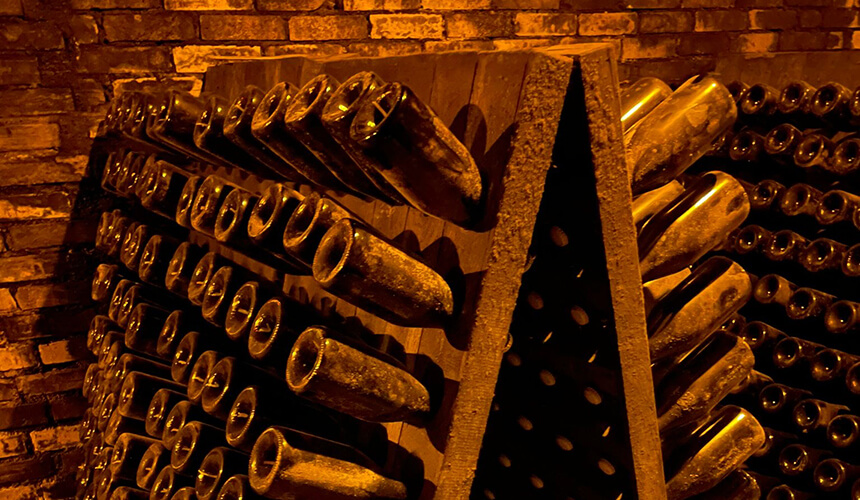My journey to Champagne began on a wet Monday morning aboard the 07.36 from Ilkley to Leeds. On arrival in London I met up with my colleague Rachel and a group of customers. Thankfully Rachel is the organized one, and was armed with sandwiches, pastries, Champagne (Ployez!) and flutes.
Once in Paris, we picked up a minibus, and I heroically(!) drove through torrential rain from the centre of Paris to Ludes , a little village between Epernay and Reims and home to Ployez-Jacquemart where we were greeted by the charming owner, Christophe Prieux.
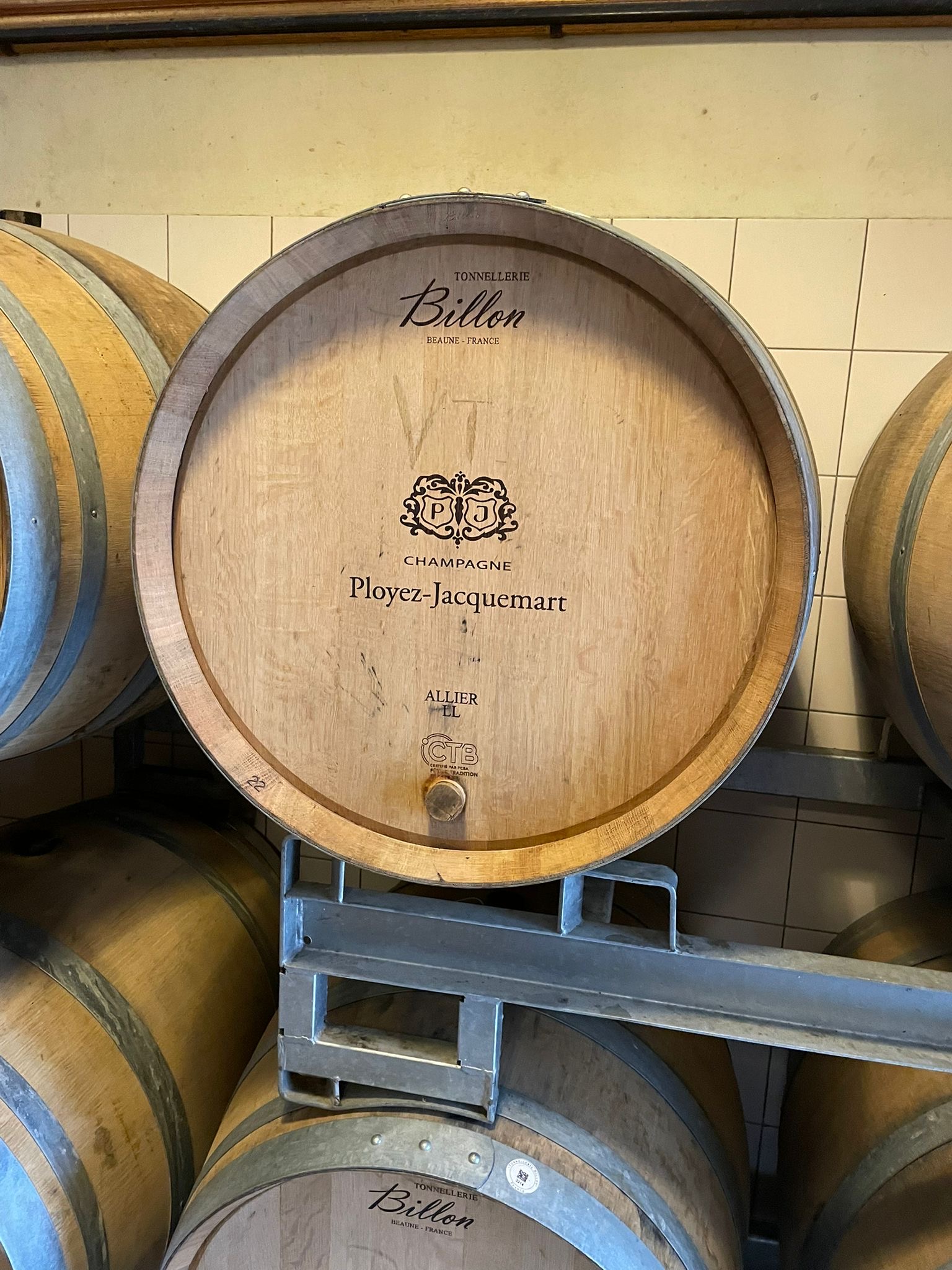
Once settled into our rooms, we headed into Reims – perfectly timed as the rain stopped and the sun came out. First stop was the cathedral (Notre-Dame de Reims) which is a UNESCO World Heritage Site, and needless to say a must visit. It dates back to the 13th century and for a few hundred years was where French Kings were coronated.
Onto dinner, the food was superb, matched by the Champagne Chrstophe had kindly arranged – Gardet Brut Tradition (45% Pinot Noir, 45% Meunier and 10% Chardonnay, aged on lees for 3-years), Dosage Zéro (equal thirds of PN, M & Ch but needless to say zero dosage), before finally finishing with Ployez-Jacquemart Extra Brut Passion – based on the 2018 vintage with 25% reserve wine and a staggering 5 years lees aging.
Back to Ployez we slept very soundly aided by the thought of 200,000 bottles of Champagne in the cellars beneath our beds!
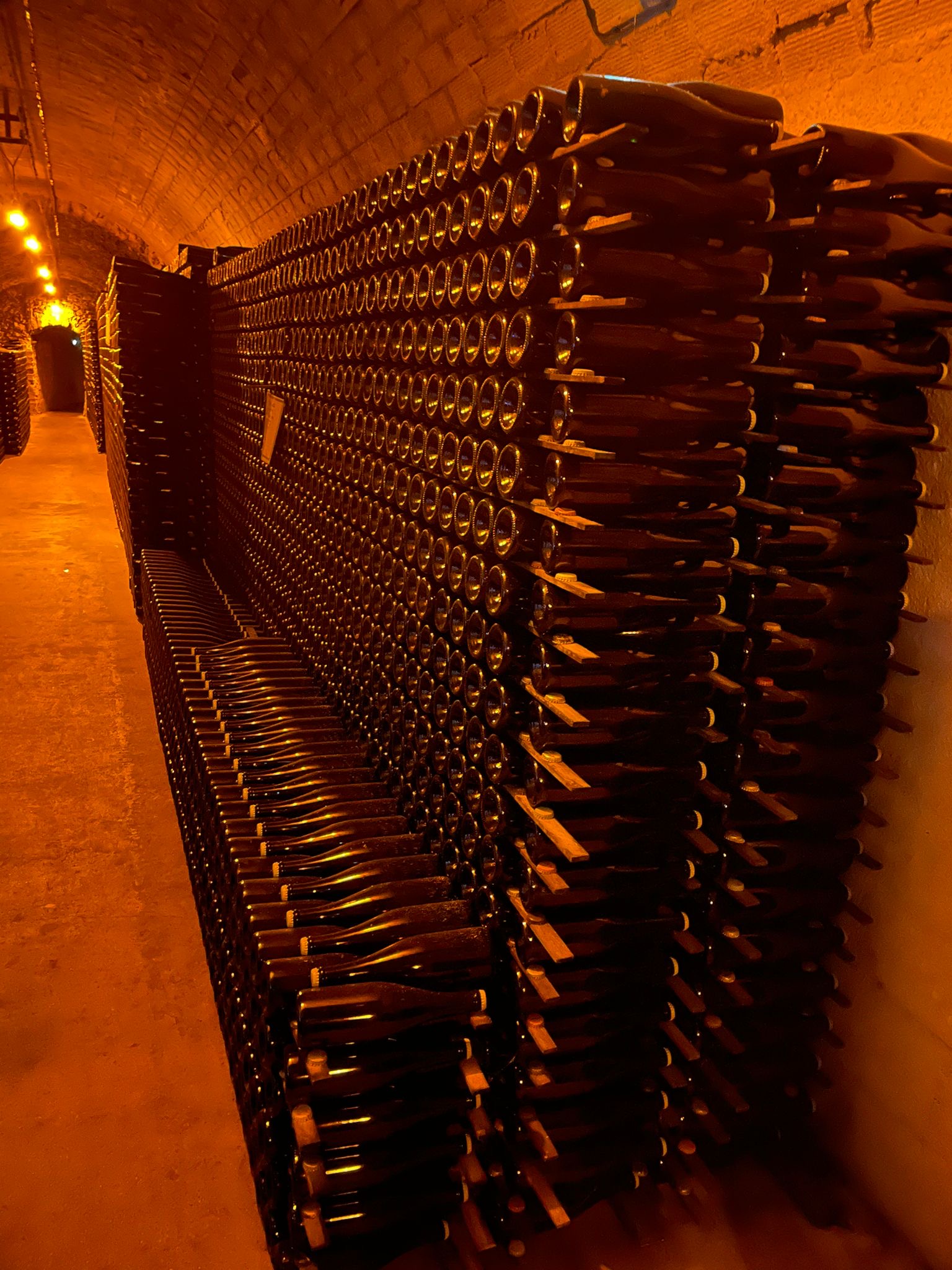
Tuesday morning it was down to business, straight into the cellars at Ployez for a tour and tasting. In Champagne terms, this is a tiny house. They produce 80,000 bottles annually, but what really makes them different? There are so many factors which in isolation doesn’t give the answer to the question, but combined is why Ployez is SO good….
- Everything is from 1er Cru vineyards. Ludes is a 1er cru village, so a little further up the slopes giving the best vines and the best grapes.
- Ageing – everything at Ployez is aged for a minimum of 4-years – the legal minimum is 15-months.
- Cellar depth – most cellars in Champagne are around 15m but at Ployez they are 25m meaning they are much cooler, and more consistent in temperature. This means the wines take much longer to ferment and age much more slowly and gracefully.
- ‘Sur Pointe’ – bottles are aged upside down rather than horizontally which limits the contact between the wine and the yeast allowing a longer ageing prior to disgorgement.
- Dosage is very low – typically 4-5g/l which is where it becomes self fulfilling. This is only possible because of the quality, coolness of cellar, length of ageing…
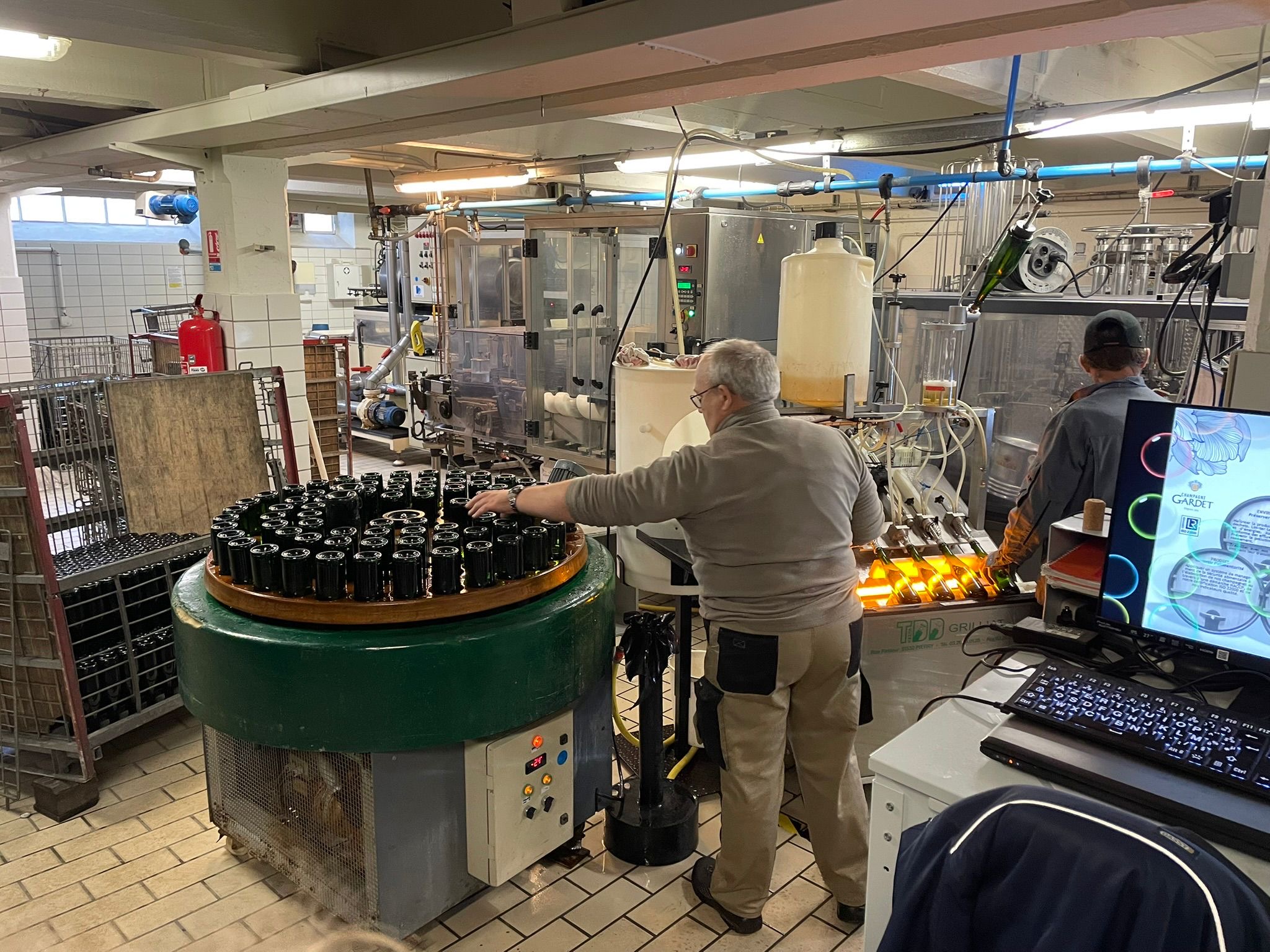
These factors give the wines smaller bubbles, a more elegant, pristine character with freshness & balance. Needless to say, we didn’t want to leave, but Christophe owns another Champagne house in the neighboring village….so we drove from Ludes to Chigny-les-Roses.
It is less than 2-miles between them, en route we saw pickers harvesting the last of the vintage. Gardet is a completely different house with separate winery, winemaker and a different method of production.
Christophe purchased Ployez in 2001, Gardet followed in 2007. He recruited head winemaker Stéphanie Sucheyre soon after, and she has gone on to be a leading light in Champagne - recently awarded ‘Master winemaker’ status by Drinks Business.
On arrival, we were immediately aware of the difference in scale between Gardet & Ployez. Gardet’s annual production is closer to 1 million bottles which is still tiny compared with the big names, but very different to Ployez.
Thanks to the timing of our trip being harvest time, we were luck enough to be able to taste unfermented grape juice in the winery. A delicious Chardonnay, ripe and fruity with a bracing acidity followed by a much fruitier Meunier. It is too early to know whether 2024 will be declared as a vintage, but when I asked him privately, Christophe beamed and nodded enthusiastically!
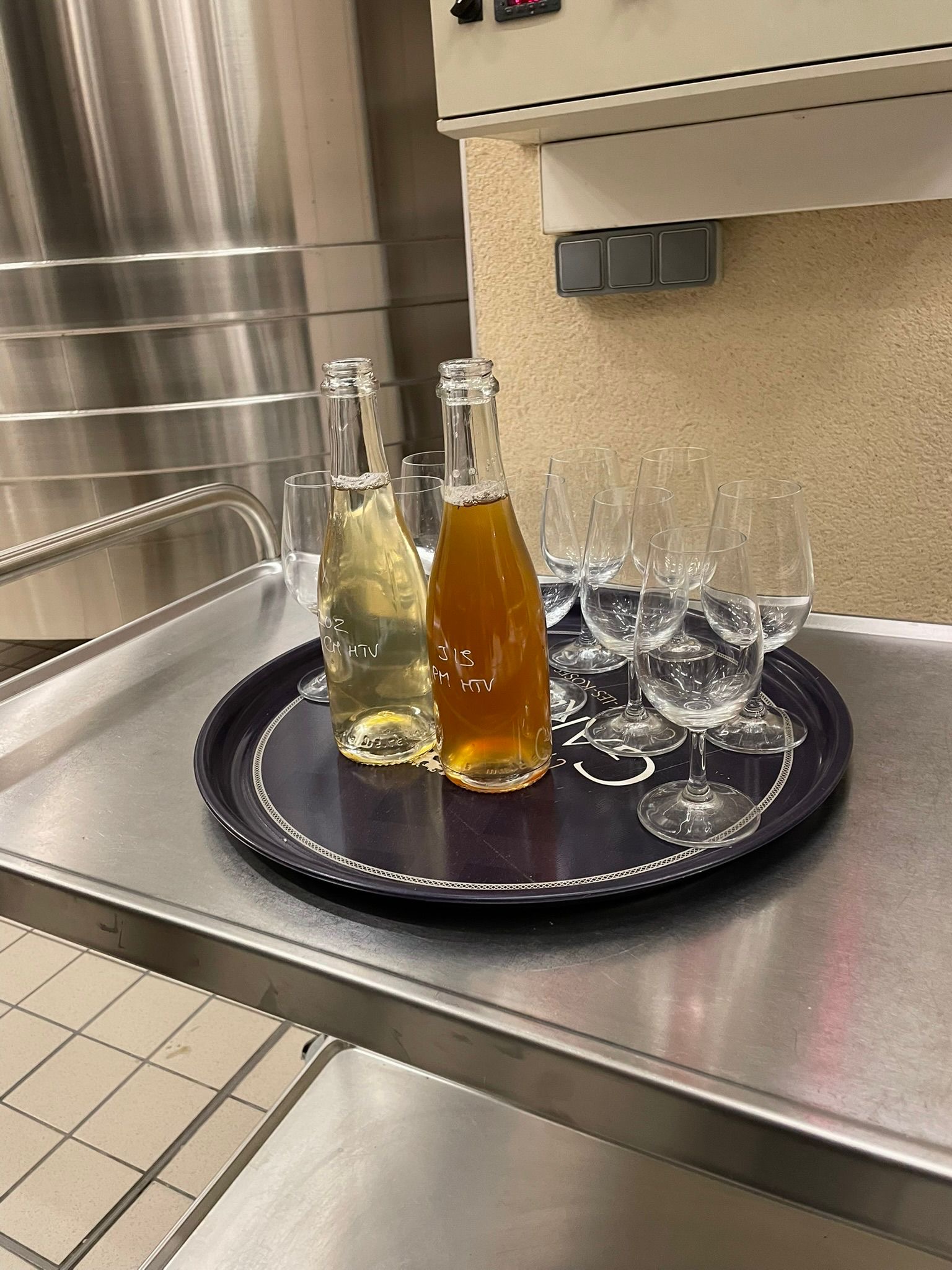
The wines here are aged for a much more modest minimum 3-years, still more than double the minimum. They are aged ‘sur latte,’ so horizontally with more lees contact. This gives the wine greater fullness and richness, riper and more rounded.
On our tour of the cellars we stopped in the library to see a collection of last treasured bottles going back as far as 1943. Christophe was kind enough to open a bottle of 2000, only recently disgorged, still fresh and lively but with incredible toasty and yeasty notes.
We went on to taste the Brut Reserve, equal thirds of PN, M & Ch with 25% of the wine aged in oak followed by Blancs de Noirs, 60% Pinot Noir & 40% Meunier with 8g/l dosage. Finally, we tasted the Vintage rosé, a method Saignee, where the colour comes from skin contact rather than the addition of red wine – probably the best rosé Champagne I’ve ever tasted.
We were then treated to a delicious lunch, before beginning our journey back north. An incredible visit, but one question remained. Which was my favourite – Ployez or Gardet? I decided that was like asking which of my two sons is my favourite – they are very different, but both are equally brilliant! I’ll drink to that – cheers!
David Archibald
Sales Director
 Back to blog
Back to blog


